VR Accessibility Recommendations¶
By Joseph Wilk, Artist
Joe Wilk, a manual wheelchair user with limited high and low grasp, has been at Ultraleap for 10 months play testing virtual reality (VR) games from an accessibility perspective. This work was done through Joe’s role as a Watershed Fellow in Residence as part of the MyWorld funded Ideas programme.
Here are his recommendations based on the accessibility problems he experienced.
VR Is For Everyone?¶
In VR, we need to help all users to find comfortable ways of interacting for their bodies. That requires expanding our notions of what a body is and designing experiences to be as inclusive as possible.
The recommendations fall into 4 categories:
Please note while these recommendations are a good start, they do not negate the need to play test with a diverse set of bodies.
Height adjustments¶
Your height position in VR sets the context for almost all interactions. Being able to adjust your height allows users to find a comfortable way to interact.
Provide an in-game height adjustment solution¶
If a game requires a high reach and it’s not possible to adjust your height, its not possible to progress. Current OS height adjustment settings do not seem to provide a sufficient solution.
Example:
The Curious Tale of the Stolen Pets has some game mechanics positioned at a high reach and the game does not provide any height adjustment.
The Curious Tale of the Stolen Pets: Interactions rooted high up.
Improvement:
Provide a height adjustment option in the settings menu.
Avoid binary height adjustments¶
These do not provide enough precision to find a comfortable position in the world. Different interactions might require different heights, reaching for the floor, reaching for a desk or reaching for a shelf.
Example:
Meta Quests’ OS provides an accessibility height adjustment option which can only be set on/off.
Meta Quest 2: Binary height adjustment
Improvement:
Replace the binary option with an offset height adjustment.
Height adjustments require interactive feedback¶
Many games provide in world sliders that allow the user height to be specified and only updated once it is confirmed. This leads to a lot of trial and error to find the right setting. It is encountered frequently as height adjustment is not a one off setting but based on what you are having trouble reaching in game. The height measurement in metres is often provided but this might not be helpful in guessing a virtual world height offset.
Example:
Startenders provides a non interactive height adjuster in the settings menu.
Startenders: Non interactive height adjust.
Improvement:
Control height offset with an up and down adjustment button that immediately updates on click. This allows previewing height adjustment without causing too much motion sickness.
Avoid assuming standing by default¶
Based on an offset from the ground, menus and interactions are rooted at a predicted standing position. If you are unable to stand then these interfaces can be out of reach.
Example:
Meta’s “First Hand” assumes the user is standing by default. This roots all the interfaces high and for someone seated it is difficult to reach the “seated mode” without standing up.
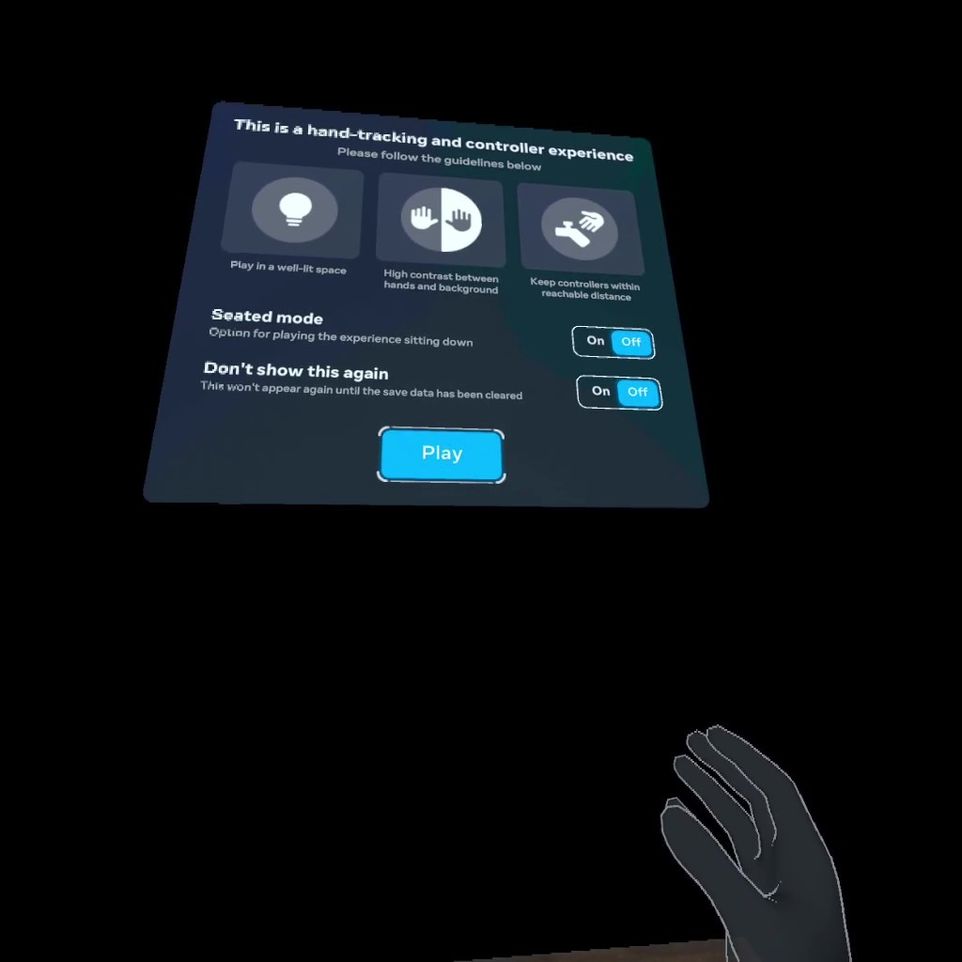
First Hand: Standing height menus.
Improvement:
A number of options are possible:
Assume seated mode as the default.
Provide a ray based targeting solution to interact with menus. (For example Rogue Ascent)
Support moving menus.
Movement & Locomotion¶
How you move around worlds in VR is a core part to how you orientate yourself for comfortable interactions. It’s well understood that solutions are required for actions like turning or moving without causing motion sickness or requiring too much repeated physical movement. This means that locomotion can impact the accessibility of VR experiences.
See our XR Guidelines page on Locomotion for a more detailed understanding of locomotion & hand tracking.
Avoid rooting users to a spot without far/near field interaction support¶
Fixing the users position prevents them from finding a comfortable way to interact.
Example:
Vader Immortal: Episode III has many scenes where the user is attached to a point and is unable to move. The in-game computer consoles rely on direct interaction and if you cannot reach them it is not possible to progress.
Vader Immortal III: Unable reach buttons.
Improvement:
I Expect You To Die roots you to the spot but provides a ray based solution that means you can bring and float objects to your character.
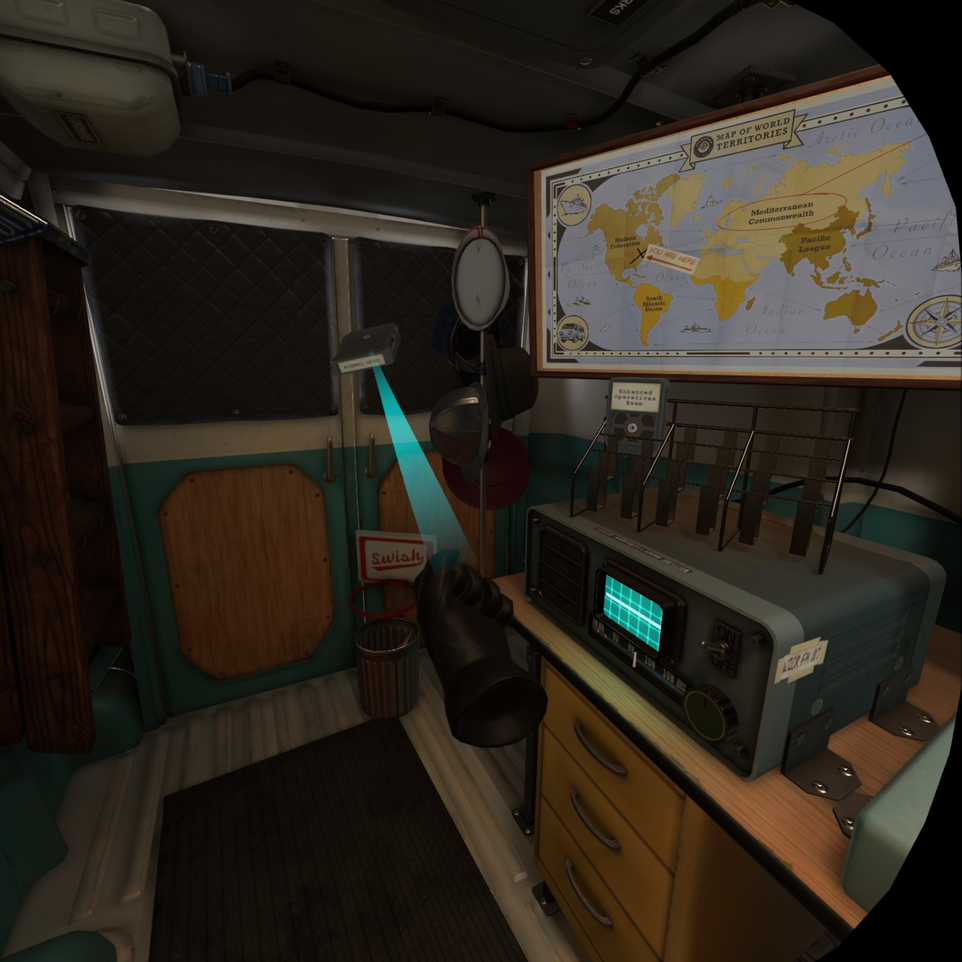
Support hand tracking for room scale movement¶
Room-scale experiences often support greater movement in a physical space. Pushing a self propelled wheelchair is difficult if your hands are also holding controllers. Hand tracking means your hands are free to move as your would normally.

Meta Quest 3 Controller
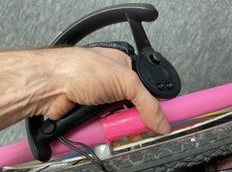
Valve Index Controller
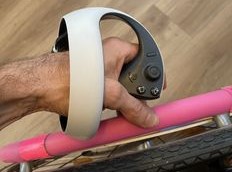
PS5 VR Controller
Example:
The PS5, Valve Index and Meta Quest 3 VR controllers when held make it very difficult to use your hands. The PS5 VR controller is particularly bad with its cage around your wrist.
Improvement:
Waltz of the Wizard and Paper Birds support hand tracking which allows naturally moving a manual wheelchair without breaking immersion.
Paper Birds: Using your hands and easily orientating in the world.
Support snap turns with hand tracking¶
Many VR games support snap-turns (the ability to instantly turn yourself left or right) when using controllers, but not when using hand tracking. Physically turning may not always be convenient or comfortable. Snap-turns provide more choice for a user.
Example:
Waltz of the Wizard uses hand-tracking and assumes the user will always turn by rotating their body. There is no alternative way to turn, so the solution when stuck is picking up the controllers to turn and then go back to using hand-tracking.
Waltz of the Wizard: No snap-turn with hand tracking.
Improvement:
Meta demonstrated a snap turn at Meta Connect 2023, triggered by the swipe of a thumb.
Meta: a snap turn performed by swiping the thumb with the index finger.
Physical Interaction & Ergonomics¶
The way we interact with virtual objects relies on a lot of assumptions about what bodies are capable of. By thinking more widely about what a body is, we can start to understand how we might build more flexibility into our virtual interactions.
Ensure access adjustments are reachable¶
Often games provide handles so you can adjust the height of in-world objects, to be more comfortable. If you position the height adjuster at the same height as the buttons then a user who cannot reach the buttons also cannot reach the height adjuster.
Example:
Cosmonious High has table height adjusters that are at a low reach and at the same level as the accessibility options.
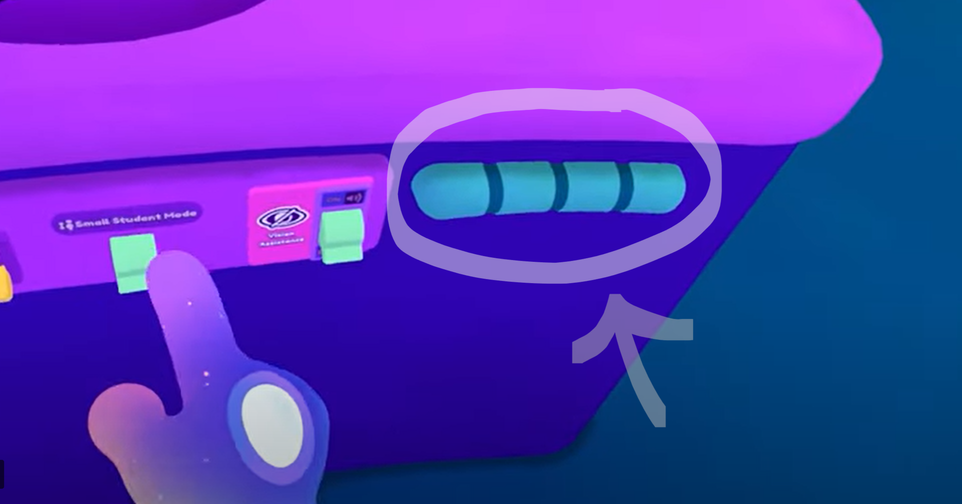
Cosmonious High: Height adjustment handles.
Avoid blocking progress with physical interactions¶
Placing game mechanics behind virtual barriers, like crates, drawers or cupboards means if you cannot reach them, it’s impossible to progress in the game.
Example:
In Eolia a key is required to finish the tutorial and start the story. If you cannot open the lid of the chest (loaded onto a wagon) then it is not possible to progress.
Eolia: Unable to reach the key in a crate.
Improvement:
User test widely with a diverse set of bodies to check if your game has any barriers you are not aware of.
Provide multiple options for how to progress.
Tutorials should be skippable where possible. If a user is stuck in the tutorial being able to skip it means they at least get to play the main game.
Support easily picking up objects from the floor¶
Repeatedly having to pickup items from the floor can be a difficult physical stretch and there may be limited range in reaching the full way. It’s also not a lot of fun.
Example:
In The Line, a book is on the floor that needs to be opened to continue. There is no way to pickup the book from the floor without physically reaching for it.
The Line: A book located on the floor and unable to reach to pickup.
Improvement:
Waltz of the Wizard has a summon solution which brings items on the floor back into your hands.
Waltz of the Wizards: Picking up from the floor.
Surgineer respawns objects back to their original position when dropped.
Surgineer: Respawning objects.
Consider carefully requiring carrying objects while moving¶
If you need both your hands to physically move (for example using a manual wheelchair) but a game requires you to hold and carry an object it becomes frustrating quickly. This is especially the case if you need to move a lot to make sure your reaches are comfortable for in world interactions.
Example:
Startenders requires a lot of holding objects and interacting with various stations. Moving between stations while holding drinking glasses which smash when dropped is frustrating.
Startenders: Dropping objects while trying to move
Improvement:
Anchor points where objects can be placed securely allowing movement without risk of dropping them.
Being able to store objects and recover them later.
A tolerance to glitches in tracking that might occur in hand-tracking data.
Avoid heavy use of straining poses¶
Having to repeat straining poses frequently leaves wrist strain after playing. A straining pose is anything that requires you to maintain a position with your hand and fingers (like thumbs up) that requires an uncomfortable level of strain. This can vary widely between different people’s hands.
See our XR Guidelines page on Hand Poses for a more detailed understanding of how to design for Hand Poses.
Example:
Ghost Signal: A Stellaris Game uses a lot of straining poses when playing the game with hand tracking.
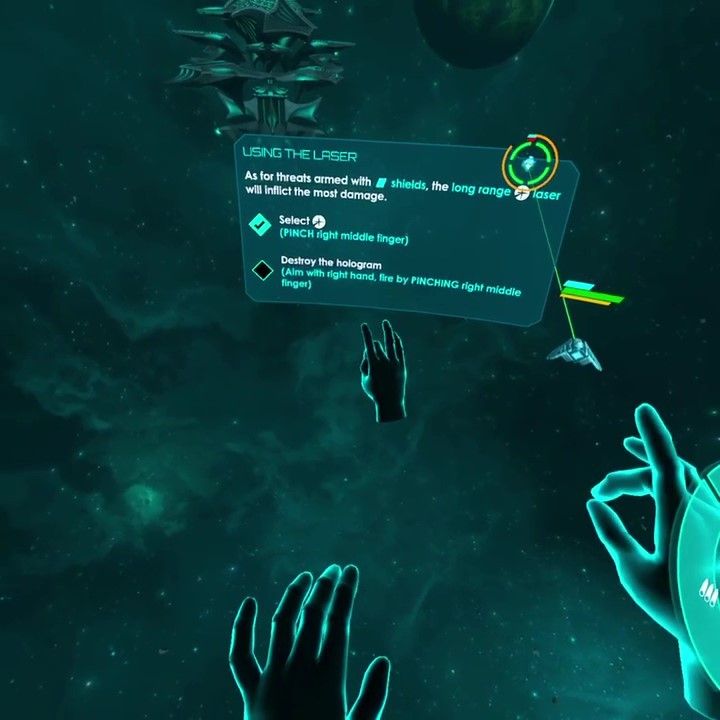
Ghost Signal: Straining hand poses with thumb and ring finger pinching.
Improvement:
Poses should be used sparingly if possible and should not be straining. Cosmonious High is a good example, using waving at characters to request help and infrequent thumbs up to indicate you are ready to progress.
Support turning off body movement based non-core game mechanics¶
Not all physical movements such as doging, ducking & jumps are comfortable for all users.
Example:
Beat Saber is largely playable seated, but there are sections with oncoming walls that have to be dodged. These walls are not a core part of the game experience and could be turned off as an accessibility option.
Beat Saber: Walls
Improvement:
An accessibility menu setting with options to turn off parts of the gameplay.
User testing with a diverse set of bodies to learn what options allow more people to play your game.
What Next?¶
Looking to learn more? Check out our XR Design Guidelines for more recommendations on how to design for Hand Tracking & XR.

